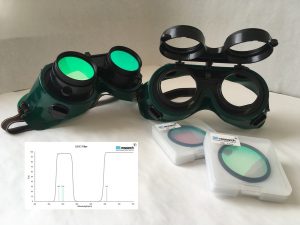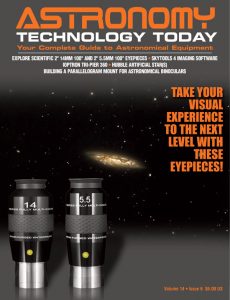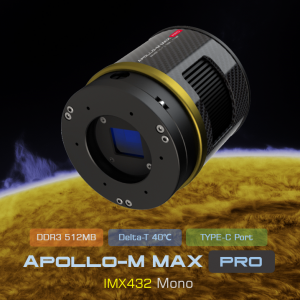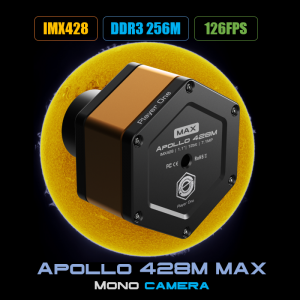
The Apache-Sitgreaves Research Center carries a special type of astronomical Observing Goggles which incorporate light pollution filters similar to the filters used in telescopes. These filters are especially effective in urban areas because they block most city light pollution in the sky.
The goggles feature 2-inch filters and are great for seeing meteor showers at home where light pollution would normally prevent seeing them. The goggles not only allow you to see stars, but also starlight from the Milky Way and light from the Faint Nebula. The filters can flip up out of the way so you can stop viewing, do something else (pour more coffee!) and then flip them down and start viewing again. The goggles are priced at $200US.
The Apache-Sitgreaves Research Center is an independent research institution operating the Apache-Sitgreaves Observatory in northern Arizona, for ground-based space research and public education programs.
The Observatory in Overgaard, Arizona is located at a world class dark sky site at just under 7,000 feet elevation It is located on top of the Colorado Plateau in Northern Arizona along with several other significant astronomical resources including the Lowell Observatories in Flagstaff and Anderson Mesa and the 4.2-meter Discovery Channel Telescope in Happy Jack.
As an educational resource for schools, the Apache-Sitgreaves Research Center goal is to demonstrate to students what astronomy is in the 21st century and to help a new generation develop the critical thinking skills needed to analyze the Universe.
To help fund the Center’s operation, the organization offers a line of visual and digital imaging products for amateur astronomers such as the observing googles.
Admittedly, this year has seen a disproportionate amount of meteor showers with poor viewing conditions due to the fact these events are occurring during periods when the moon is at half moon or more. However, thanks to information provided by the American Meteor Society there are some bright spots to the end of the year.
For example, we are now experiencing the Southern Taurids meteor shower which will continue through November 20th. While this event rarely produces more than five shower members per hour, even at maximum activity, the Taurids (both branches) are rich in fireballs and are often responsible for increased number of fireball reports from September through November. The peak is on the night of Oct 9-10, 2019 which, unfortunately, will during a time when the moon will be 87% full.
The Ursids meteor showers (December 17 – 19) are often neglected due to the fact they peak just before Christmas and the rates are much less than the Geminds, which peaks just a week before the Ursids (The Geminids will peak on the night of Dec 13-14, 2019 night when the moon will be 96% full ). Observers will normally see 5-10 Ursids per hour during the late morning hours on the date of maximum activity. There have been occasional outbursts when rates have exceeded 25 per hour. These outbursts appear unrelated to the perihelion dates of comet 8P/Tuttle. This shower is strictly a northern hemisphere event as the radiant fails to clear the horizon or does so simultaneously with the start of morning twilight as seen from the southern tropics. The Ursids will peak on the Dec 21-22, 2019 night. On this night, the moon will be 20% full.
The Quadrantids have the potential to be the strongest shower of the year but usually fall short due to the short length of maximum activity (6 hours) and the poor weather experienced during early January. The average hourly rates one can expect under dark skies is 25. These meteors usually lack persistent trains but often produce bright fireballs. Due to the high northerly declination (celestial latitude) these meteors are not well seen from the southern hemisphere. The Quadrantids will next peak on the night of Jan 3-4, 2020 night where the moon will be only 4% full.
 And to make it easier for you to get the most extensive telescope and amateur astronomy related news, articles and reviews that are only available in the magazine pages of Astronomy Technology Today, we are offering a 1 year subscription for only $6! Or, for an even better deal, we are offering 2 years for only $9. Click here to get these deals which only will be available for a very limited time. You can also check out a free sample issue here.
And to make it easier for you to get the most extensive telescope and amateur astronomy related news, articles and reviews that are only available in the magazine pages of Astronomy Technology Today, we are offering a 1 year subscription for only $6! Or, for an even better deal, we are offering 2 years for only $9. Click here to get these deals which only will be available for a very limited time. You can also check out a free sample issue here.



